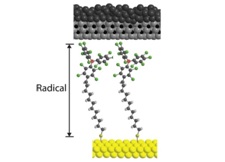
Chemical control over the energy-level alignment in a two-terminal junction
Li Yuan, Carlos Franco, Núria Crivillers, Marta Mas-Torrent, Liang Cao, C.S. Suchand Sangeeth, Concepció Rovira, Jaume Veciana, Christian A. Nijhuis
The energy-level alignment of molecular transistors can be controlled by external gating to move molecular orbitals with respect to the Fermi levels of the source and drain electrodes. Two-terminal molecular tunnelling junctions, however, lack a gate electrode and suffer from Fermi-level pinning, making it difficult to control the energy-level alignment of the system. Here we report an enhancement of 2 orders of magnitude of the tunnelling current in a two terminal junction via chemical molecular orbital control, changing chemically the molecular component between a stable radical and its non-radical form without altering the supramolecular structure of the junction. Our findings demonstrate that the energy-level alignment in self-assembled monolayer-based junctions can be regulated by purely chemical modifications, which seems an attractive alternative to control the electrical properties of two terminal junctions.
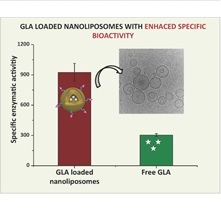
alpha-Galactosidase A Loaded Nanoliposomes with Enhanced Enzymatic Activity and Intracellular Penetration
I. Cabrera, I. Abasolo, J. L. Corchero, E. Elizondo, P. Rivera, E. Moreno, J. Faraudo, S. Sala, D. Bueno, E. González-Mira, M. Rivas, M. Melgarejo, D. Pulido, F. Albericio, M. Royo, A. Villaverde, M. F. García-Parajo, S. Schwartz Jr., N. Ventosa, and J. Veciana, Adv Healthc Mater. 2016 Apr;5(7):829-40. doi: 10.1002/adhm.201500746.
Lysosomal storage disorders (LSD) are caused by lysosomal dysfunction usually as a consequence of deficiency of a single enzyme required for the metabolism of macromolecules such as lipids, glycoproteins and mucopolysaccharides. For instance, the lack of alpha-Galactosidase A (GLA) activity in Fabry disease patients causes the accumulation of glycosphingolipids in the vasculature leading to multiple organ pathology. Enzyme replacement therapy (ERT), which is the most common treatment of LSD, exhibits several drawbacks mainly related to the instability and low efficacy of the exogenously administered therapeutic enzyme. In this work, the unprecedented increased enzymatic activity and intracellular penetration achieved by the association of a human recombinant GLA to nanoliposomes functionalized with RGD peptides is reported. Moreover, these new GLA loaded nanoliposomes lead to a higher efficacy in the reduction of the GLA substrate named globotriasylceramide (Gb3) in a cellular model of Fabry disease, than that achieved by the same concentration of the free enzyme. The preparation of these new liposomal formulations by DELOS-SUSP, based on the Depressurization of a CO2-Expanded Liquid Organic Solution, shows the great potential of this CO2-based methodology for the one-step production of protein-nanoliposome conjugates as bioactive nanomaterials with therapeutic interest.
Read full article here: http://www.ncbi.nlm.nih.gov/pubmed/26890358
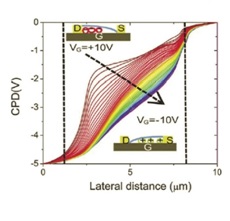
Tuning Crystal Ordering, Electronic Structure, and Morphology in Organic Semiconductors: Tetrathiafulvalenes as a Model Case
Pfattner, R., Bromley, S. T., Rovira, C. and Mas-Torrent, M. (2016). Adv. Funct. Mater., 26: 2256–2275. doi:10.1002/adfm.201502446
Tetrathiafulvalenes (TTFs) are an appealing class of organic small molecules giving rise to some of the highest performing active materials reported for organic field effect transistors (OFETs). Because they can be easily chemically modified, TTF-derivatives are ideal candidates to perform molecule–property correlation studies and, especially, to elucidate the impact of molecular and crystal engineering on device performance. A brief introduction into the state-of-the-art of the field-effect mobility values achieved with TTF derivatives employing different fabrication techniques is provided. Following, structure–performance relationships are discussed, including polymorphism, a phenomenon which is crucial to control for ensuring device reproducibility. It is also shown that chemical modification of TTFs has a strong influence on the electronic structure of these materials, affecting their stability as well as the nature of the generated charge carriers, leading to devices with p-channel, n-channel, or even ambipolar behaviour. TTFs have also shown promise in other applications, such as phototransistors, sensors, or as dopants or components of organic metal charge transfer salts used as source–drain contacts. Overall, TTFs are appealing building blocks in organic electronics, not only because they can be tailored to perform fundamental studies, but also because they offer a wide spectrum of potential applications.
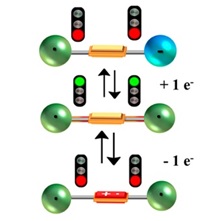
Three Redox States of a Diradical Acceptor-Donor-Acceptor Triad: Gating the Magnetic Coupling and the Electron Delocalization
Manuel Souto, Vega Lloveras, Sergi Vela, Maria Fumanal, Imma Ratera, and Jaume Veciana; J. Phys. Chem. Lett. 2016, 7, 2234−2239
The diradical acceptor-donor-acceptor triad 1••, based on two polychlorotriphenylmethyl (PTM) radicals connected through a tetrathiafulvalene(TTF)-vinylene bridge, has been synthesized. The generation of the mixed-valence radical anion, 1•-, and triradical cation species, 1•••+, obtained upon electrochemical reduction and oxidation, respectively, was monitored by optical and ESR spectroscopy. Interestingly, the modification of electron delocalization and magnetic coupling was observed when the charged species were generated and the changes have been rationalized by theoretical calculations.
Read the article here: http://pubs.acs.org/doi/abs/10.1021/acs.jpclett.6b00912
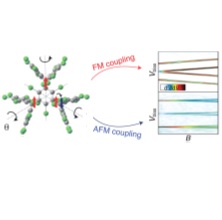
Exchange Coupling Inversion in a High-Spin Organic Triradical Molecule
R. Gaudenzi, E. Burzurí, D. Reta, de P. R. Moreira, S. T. Bromley, C. Rovira, J. Veciana, and H. S. J. van der Zant; Nano Lett. 2016, 16, 2066−2071
The magnetic properties of a nanoscale system are inextricably linked to its local environment. In adatoms on surfaces and inorganic layered structures, the exchange interactions result from the relative lattice positions, layer thicknesses, and other environmental parameters. Here, we report on a sample-dependent sign inversion of the magnetic exchange coupling between the three unpaired spins of an organic triradical molecule embedded in a three-terminal device. This ferro-to-antiferromagnetic transition is due to structural distortions and results in a high-to-low spin groundstate change in a molecule traditionally considered to be a robust high-spin quartet. Moreover, the flexibility of the molecule yields an in situ electric tunability of the exchange coupling via the gate electrode. These findings open a route to the controlled reversal of the magnetic states in organic molecule-based nanodevices by mechanical means, electrical gating, or chemical tailoring.








 News
News